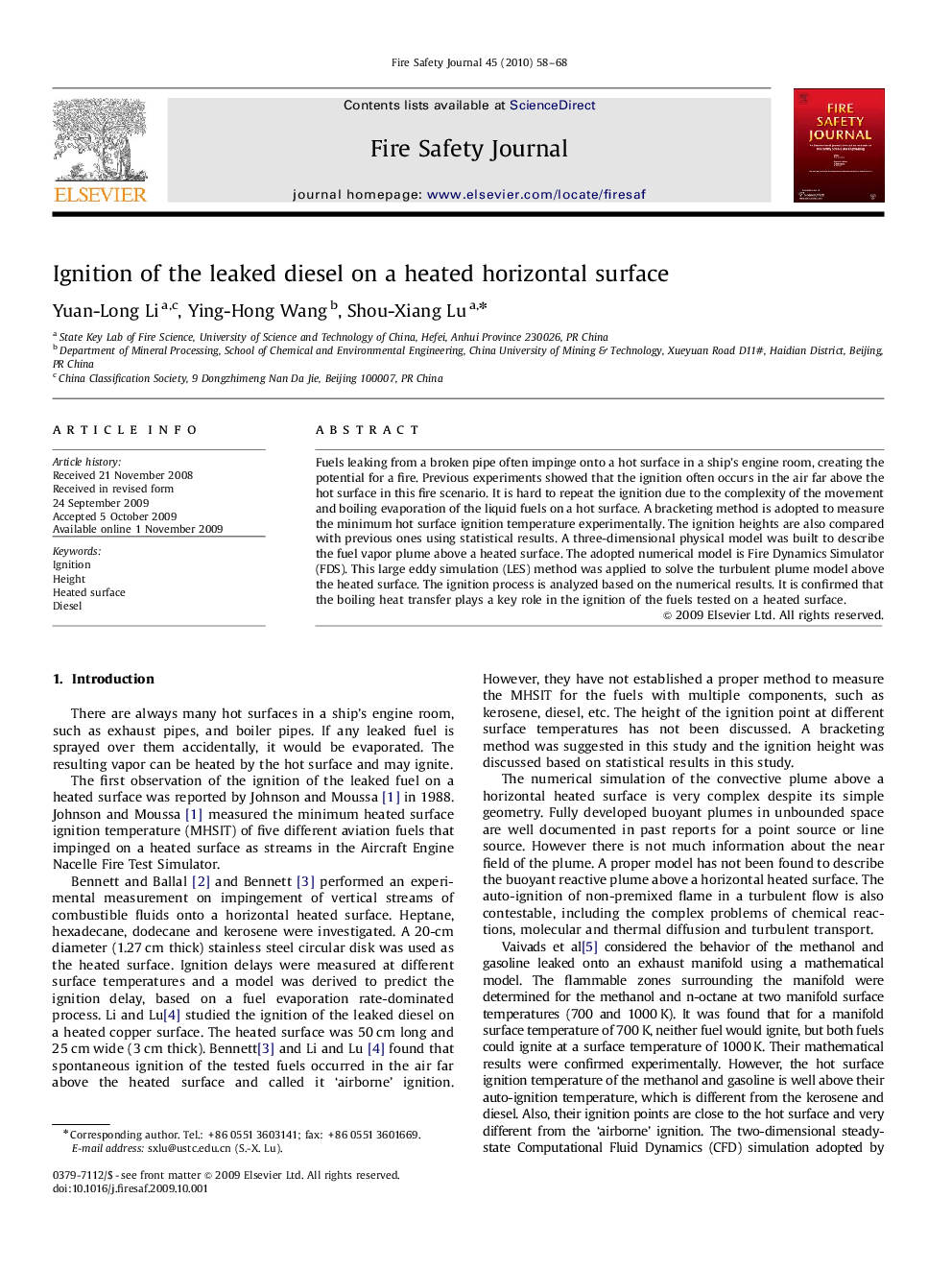| Article ID | Journal | Published Year | Pages | File Type |
|---|---|---|---|---|
| 270410 | Fire Safety Journal | 2010 | 11 Pages |
Fuels leaking from a broken pipe often impinge onto a hot surface in a ship's engine room, creating the potential for a fire. Previous experiments showed that the ignition often occurs in the air far above the hot surface in this fire scenario. It is hard to repeat the ignition due to the complexity of the movement and boiling evaporation of the liquid fuels on a hot surface. A bracketing method is adopted to measure the minimum hot surface ignition temperature experimentally. The ignition heights are also compared with previous ones using statistical results. A three-dimensional physical model was built to describe the fuel vapor plume above a heated surface. The adopted numerical model is Fire Dynamics Simulator (FDS). This large eddy simulation (LES) method was applied to solve the turbulent plume model above the heated surface. The ignition process is analyzed based on the numerical results. It is confirmed that the boiling heat transfer plays a key role in the ignition of the fuels tested on a heated surface.
